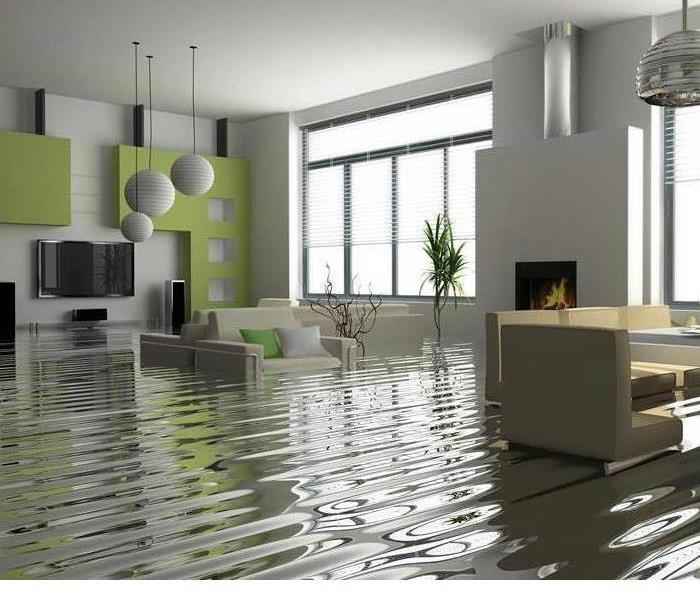Water Damage Hazards!
11/1/2023 (Permalink)
The safety hazards and precautions associated with water damage restoration are as follows:
Electrical Hazards
Mixing water and electricity creates a potential for disaster, and electrical hazards exists everywhere on the typical water damage job site. Water that comes into the building from either a roof leak or from water pipes in the attic is likely to intrude into the wiring system. Floods may also cause water to intervene into the wiring system.
The first item to check is the power distribution box. Turning off all circuit breakers at the power distribution panel is the easiest way to protect you, your Crews, and building occupants from electrical shock hazards. If only a portion of the building is affected, then turn off all circuits that provides power to the damaged areas if water has intruded into wall cavities and electrical outlets, or when electrical outlets are located on the floor. Use either a lockout device or tagout device when circuits are turned off to prevent shock hazards.
Structural Hazards
Storm damaged structures might be weakened and pose hazards. Floods and earthquakes can cause considerable damage to a building foundation or to the bearing partitions under and around a structure. Storm surge and wave action from a hurricane can undermine foundations or damage pilings in pier-type construction. Long-term exposure to water may destroy the structural reliability of materials, such as particle board and drywall, which creates a hazard for workers and occupants. Determine the potential structural hazards before proceeding with mitigation and restoration services.
Hazardous Materials
Hazardous chemicals or hazardous materials, lead, and asbestos may be present in some water damaged buildings. Be alert for hazardous materials and do not try to handle or remove them unless you are certified to handle hazardous materials. Use qualified Subcontractors to remove and dispose of hazardous materials.
Slip, Trip, and Fall Hazards
Water damaged structures and the restoration processes can create numerous slip, trip, and fall hazards. Wet surfaces are usually slick, equipment hoses, and power cords provide ample opportunity for workers and occupants to slip, trip, or fall. Post warning signs and brief occupants about the hazards. Slippery floors are a common hazard in water damaged situations. People may not recognize the potential hazard of walking from a wet carpeted surface onto a hard floor surface, such as vinyl tile. Wet shoes may not slip much on the carpet, but when the person steps onto the hard floor surface then a serious slip hazard exists. Ensure that occupants understand this hazard.
Hoses and power cords may become a tangled maze for occupants and workers to navigate during emergency services. During the drying stage, equipment power cords may be a problem for occupants. Secure dehumidifier and air mover cords to limit the hazard during the drying phase. Floating carpets also present a trip hazard. Ensure occupants understand that they should not be walking on carpet that is being floated.
The living room consists of contemporary furniture and this area is affected by approximately 4 feet of standing water.
Do not hesitate to contact SERVPRO® of Panthersville at (678) 515-8602 when disaster strikes from water damages!







 24/7 Emergency Service
24/7 Emergency Service
